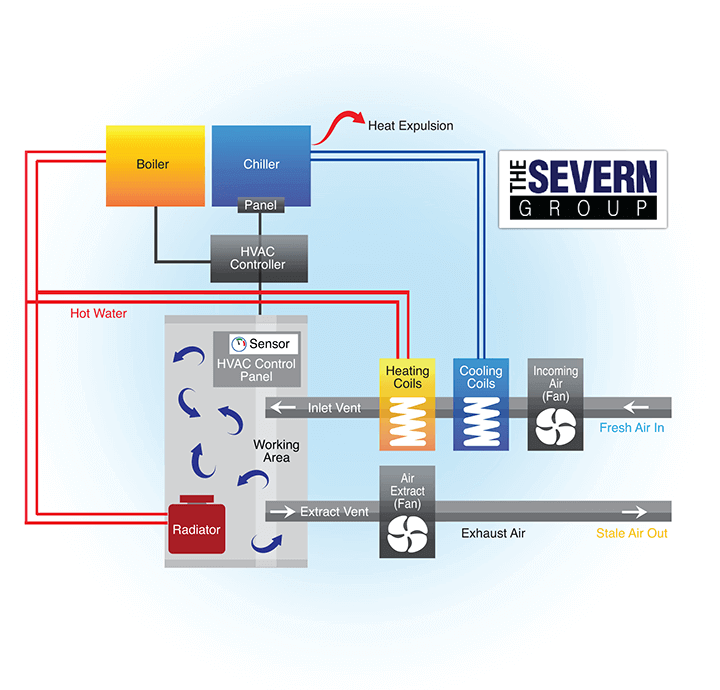How Does an HVAC System Work?
The term HVAC stands for heating, ventilation and air conditioning, a system used to control the temperature in a space as well as humidity and quality of air. In a big building, the system needs to be able to function based on comfort need as well as meet the size of the space. The HVAC system must transfer heat and moisture into and out of the air to control the temperature level, as well as the level of air pollutants. This is done by removing the pollutants directly or by diluting them.
How does an HVAC System Operate?
The individual components of an HVAC system will vary depending on the setup inside the building. However, most units will contain basic components that include the following:
- Boilers – The boiler is used to produce hot water or steam to distribute the component throughout the building. This hot water or steam will be produced via heating coils or hot water pipes.
- Cooling equipment – The cooling equipment of the unit will chill the water within the cooling coils. Air is blown over the chilled water coils and used in the space via a ventilation system. As part of this process, any heat will be removed via a condenser or cooling tower.
- Pumps – Are used within the system to circulate chilled and hot water to the specified areas of the building.
- Fans – Are used within the unit to remove stale air via separate duct work and then placed outside the space.
Energy Use of an HVAC System
When it comes to the energy usage of an HVAC system, there are five factors at play. Energy usage is important as you want to use as little energy as possible but still cool and heat the space. An energy efficient unit will use less energy which will cost less to operate. These factors include:
- Building design, layout, and operation – This will affect the internal temperature and humidity of the space.
- Required temperature and air quality – More energy will be used when extreme temperatures are needed along with refined air quality.
- Lighting, equipment, and people – The lighting used, as well as equipment and people inside, will be a factor contributing to the heat generated within the space.
- HVAC design and efficiency – This is the area in which heating, cooling and moisture control is needed.
- HVAC equipment operating time and control ability – This will limit the operation to when it is needed to cut down on energy usage and cost.
There are many factors that need to be considered when trying to create a comfortable space inside a large building. Consulting with a professional HVAC company will ensure that you have the right unit type installed. Or, if you are installing the right system when creating a new space or replacing a unit. Professionals in HVAC know just what to do to provide optimal equipment for temperature control, energy efficiency, and humidity challenges within a larger space.

